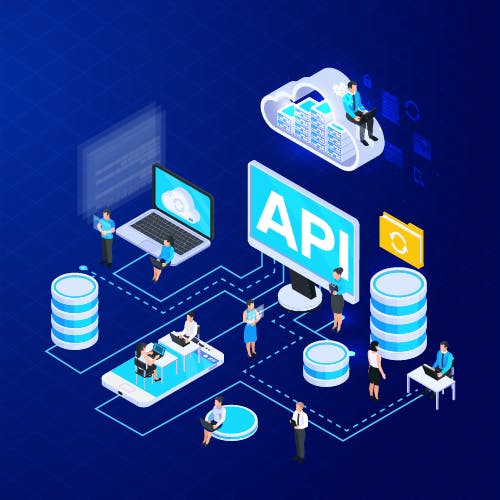API101: A Beginner's Guide to Application Programming Interfaces (Part Two)
Discovering the Fundamentals of APIs: From HTTP Requests to Data Responses
Welcome back to API 101: A Beginner's Guide to Application Programming Interfaces. In Part One, we covered the basics of APIs, including what they are, why they're important for businesses, the different types of API architecture, and how to make requests using HTTP methods. Now, in Part Two, we're going to take our understanding of APIs to the next level by exploring some essential topics that are critical for anyone working with APIs. Specifically, we'll be focusing on API security, documentation, integration, and management. By the end of this article, you'll have a well-rounded understanding of APIs and be equipped with the knowledge and tools needed to work with them effectively and efficiently.
API Security

We have seen what APIs are and how they have improved businesses; this will lead us to this important aspect of APIs, which is API security.
API Security is the best practice that is associated with protecting APIs from unauthorized access, data breaches, and other security threats.
APIs play a crucial role in facilitating seamless communication and data exchange between diverse systems. Because of how essential they are, they can cause potential risks if not protected well. This can include using API keys, OAuth tokens, or other forms of secure authentication. Other aspects of API security that we might not cover in this series include implementing rate limiting so as to prevent API abuse, monitoring, and logging API activity to detect any suspicious behavior or potential attacks, and maintaining API security by regularly updating and patching any vulnerabilities.
In this article, we are going to be exploring three different ways of securing APIs, which include:
API authentication
API authorization
API keys
API Authentication
The word "authenticate" means to verify the identity of something. This same concept is what we use in APIs. To be able to add security, we make sure that any user or application sending a request through that endpoint is authenticated. It ensures that the set of users or applications that can access the service has been granted access. When we leave our APIs unauthenticated, we expose them to threats; hence, it is a good practice to ensure that our APIs are protected.
There are various ways to authenticate our APIs, some of which include:
API Keys
Basic Authentication
JSON Web Tokens (JWT)
OAuth Tokens
NB: Each method of authentication has its own strength and weaknesses.
API Keys: This is the most common method of authentication. In this method, a key which is a unique identifier is given to the user or application in order to access the API. Anytime a request is made to the server, that key is passed as an identifier to grant access.
Basic Authentication: This method includes sending a username and password to the header of our request. The server authenticates by verifying the username and password.
JSON Web Tokens (JWT): This method involves the use of the JWT tokens to authenticate users. These tokens are digitally signed to ensure that they are authorized. The JSON payload usually contains information about the user, which may include permissions or access levels.
OAuth: This is an authorization framework that enables third-party applications to access protected resources on behalf of a user without accessing the user's password. The user is usually redirected to a separate authorization server to authenticate and grant permission to the third-party application with an access token that is used to access the API request.
To understand more about what authentication is all about, you can check out this amazing article, Introduction to REST API Authentication Methods by Victoria Lo.
API Development and Documentation

API Development
This involves the logic that runs the application we are trying to build. This logic exposes the data and functionality to a client through a well-defined interface. The stages in this process include designing, building, testing, and deployment. Some of the good API development practices include:
Design the API with the end-users in mind.
Follow standards and best practices for REST API design.
Providing clear and concise error messages and handling errors gracefully.
Versioning the API to maintain backend compatibility and support legacy clients.
Securing the API with the appropriate authentication and authorization mechanisms.
PS: I am not 100% perfect in all these best practices, but as we continue to build, we will continue to grow and practice good development practices.
API Documentation
API documentation provides information about how to use and integrate with an API. It helps developers understand the purpose of the API, the available resources, methods, parameters, and responses, as well as how to authenticate and authorize API requests. A good documentation practices include the following:
Providing clear and concise documentation that is easy to read and understand.
Following a consistent format and structure for documenting API endpoints, methods, and parameters.
Providing code examples and client libraries in popular programming languages to help developers get started quickly.
Updating the documentation regularly to reflect the changes to the API.
It is necessary that we understand that development and documentation are two important aspects of building a well-structured API. When we design APIs with clear and concise documentation, we help other developers integrate and also reduce the learning curve for new developers.
And we have come to the end of this wonderful part of this series. Sit tight as I take you around the world of APIs, 🚀🚀🚀🚀🚀.
Image Credits
You can follow me on the following platforms so as to get notifications when the next article drops, trust me, this one is going to be explosive. Adiós ✌✌✌
Twitter 🐦: @nwokporo_ebuka
LinkedIn ⚡: @chukwuebuka_nwokporo
GitHub 🚀: @ebukvick
Hashnode 📗: Nwokporo Chukwuebuka
